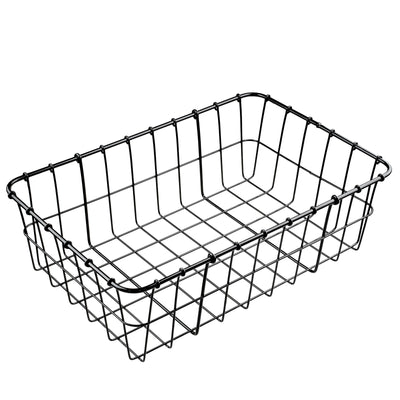Fenders on Disc Brake Bikes
by Igor

With the trickle down of disc brakes into bikes of any and all sorts, our inbox has been deluged with questions about fender mounting and compatibility.
The requirements of being an easily fender-able disc brake bike is the same as any bike with rim brakes:
1) Clearances - Your frame should have reasonable clearances around the chain stays and seat stays, and your fork should have sufficient vertical and lateral clearance.
Road racing and track frames, more often than not, have very narrow clearances around chain and seat stays and fork crowns. These bikes are designed for aerodynamics and drastically reduced weight. This often means that if a detail isn't designed for structure and performance, chances are you won't see them. Forget about dedicated rack and fender mounts or even triple bottle cage mounts. Grams add up to lost time over a stage.

Vintage frames that use centerpulls or longer reach brakes typically have more clearance, especially if you do a 27 -> 700c wheel conversion. These often make great randonneurs and sportif bikes as they feature a multitude of desirable attributes that are incorporated into many of today's modern offerings including lightweight tubing, low bottom brackets, and bigger tire clearance. Some even make for good 650b conversions for even floaty-er tires and clearance.

Pro tip: Before a long climb, move your water bottle from your cage to your jersey pocket. You'll climb faster due to less weight on the bike. Discuss in comments.
2) Bridges - In order to have an easy time of mounting, both your seat stay and chain stay bridges need to exist - bonus points if they have threaded braze-ons that point towards the wheel.

If your bike does have a bridge but it isn't drilled, use a p-clamp!
We've noticed a lot of contemporary cyclo-cross bikes are bridge-less for mud clearance and comfort over rough terrain. While it is possible to mount a fender using a kludge of hardware, it isn't ideal and it certainly isn't elegant.

Pro tip: Before a long climb, move your water bottle from your cage to your jersey pocket. You'll climb faster due to less weight on the bike. Discuss in comments.
2) Bridges - In order to have an easy time of mounting, both your seat stay and chain stay bridges need to exist - bonus points if they have threaded braze-ons that point towards the wheel.

If your bike does have a bridge but it isn't drilled, use a p-clamp!
We've noticed a lot of contemporary cyclo-cross bikes are bridge-less for mud clearance and comfort over rough terrain. While it is possible to mount a fender using a kludge of hardware, it isn't ideal and it certainly isn't elegant.

3) Dropout Eyelets - Threaded or unthreaded, these are incredibly useful. If your bike has the above requisite features but doesn't have eyelets on the dropouts, p-clamps or our Fender Stay Mounts for Eyeletless Frames are needed to mount the stays to the frame or fork.

Alas, many manufacturers have forgone eyelets on their performance offerings, though some lucky few offer removable ones. I never understood this. If you're going to drill and tap the frame for a stud for a removable eyelet, why not include it in the casting/mold? It would look intentional and simple.

That's it for the requirements! The next step is negotiating the caliper.
For the frame, there is typically minimal finagling. This is especially true if the caliper is located within the rear triangle like our frames feature. For caliper located on top of the seatstay, you'll have to play it by ear since the size, shape, and location of the caliper may necessitate bending the stay.
The front is a bit trickier. The caliper, for the most part, sits in the same place for almost all forks. Simply bending the stay vertically around the caliper should provide enough clearance for the brake to operate normally. Some forks, like our Pass Hunter, simply offer a higher mounting point to get around the issue. It isn't the most traditional looking, but it functions perfectly fine. The Polyvalent has a braze-on underneath the dropout for regular fender mounting.






